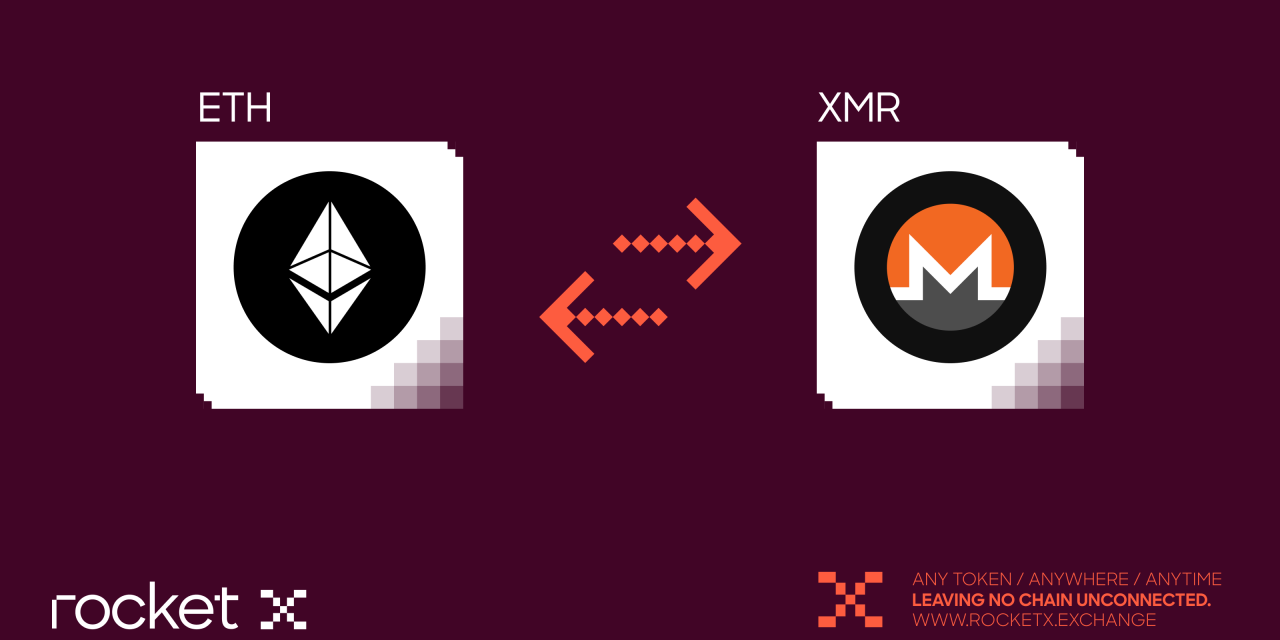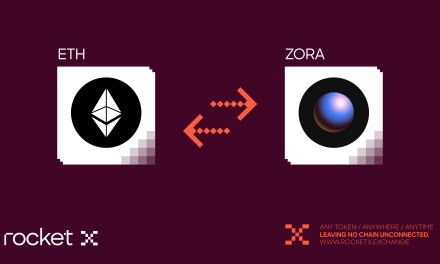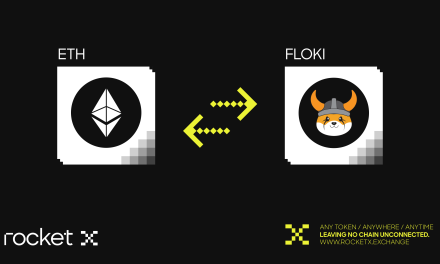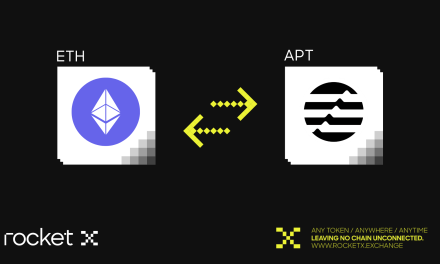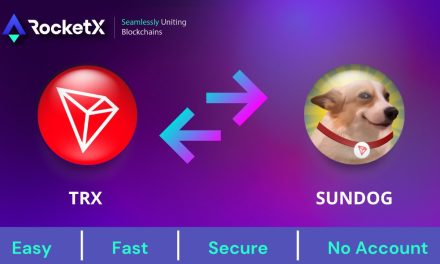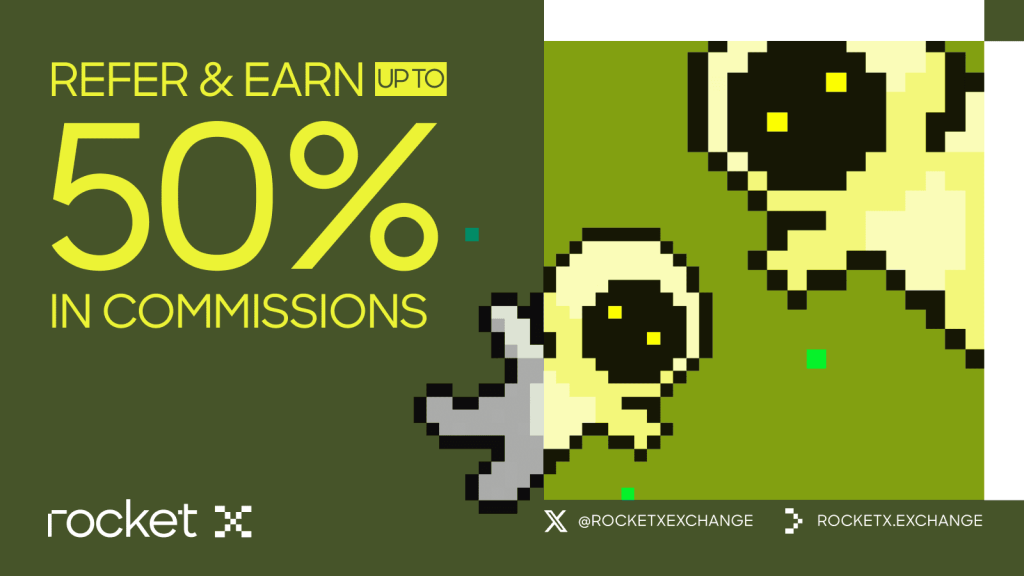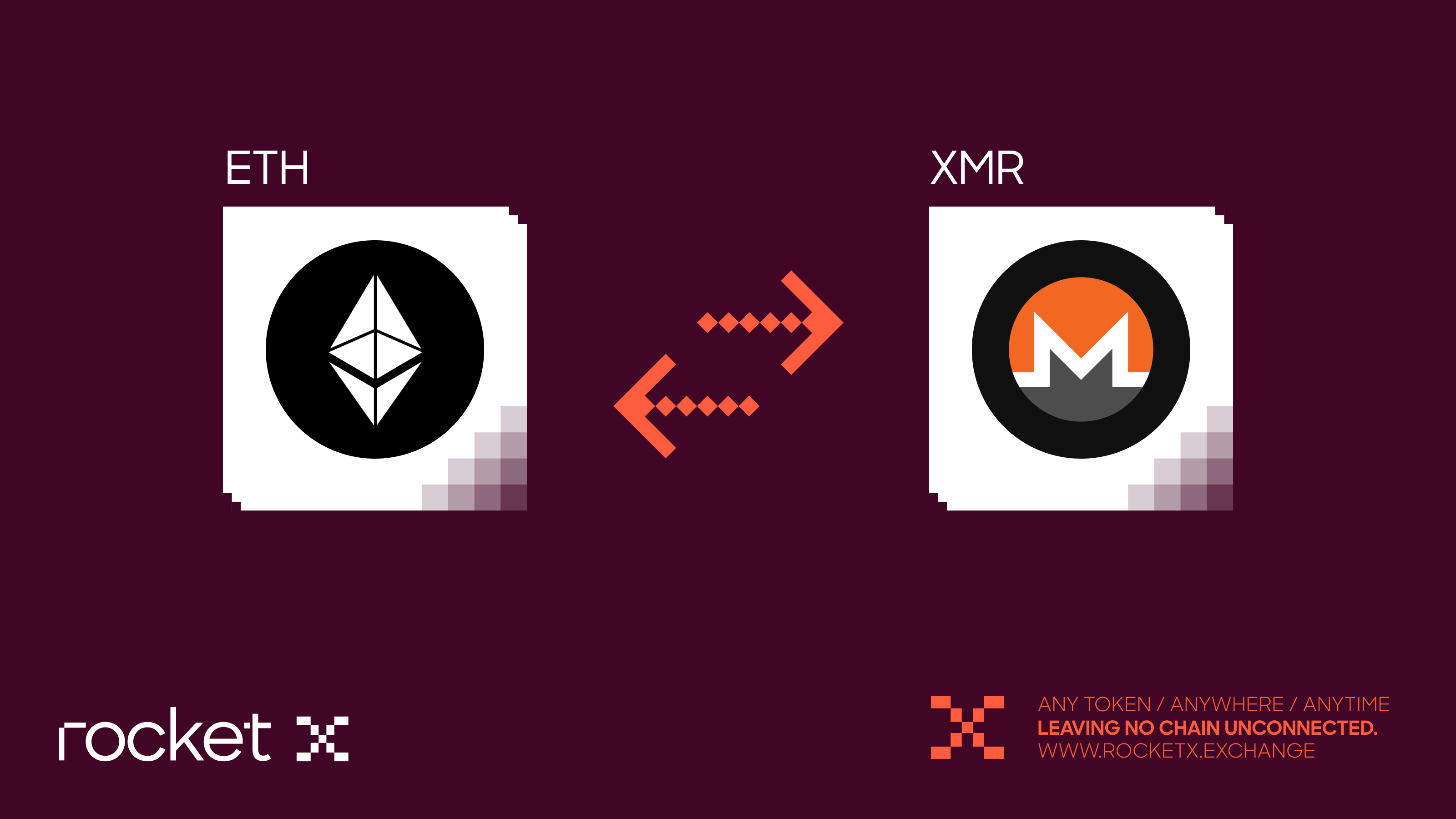
Introduction
Privacy in the digital age is becoming a luxury. As financial systems get increasingly transparent, Monero (XMR) stands as a rare exception—built from the ground up to protect user anonymity. Unlike public blockchains, where anyone can trace transactions, Monero makes financial activity confidential, secure, and truly untraceable.
In this comprehensive guide, let’s explore what Monero is, how it works, what makes it unique, and how you can buy or swap Monero using RocketX Exchange, the smartest non-custodial aggregator for cross-chain swaps.
What Is Monero (XMR)?
Monero (XMR) is an open-source, privacy-centric cryptocurrency launched on April 14, 2014, as a fork of Bytecoin. It is built on the CryptoNote protocol, specifically designed to ensure transactions remain completely private by default — not optional.
While blockchains like Bitcoin or Ethereum make all transaction details publicly viewable, Monero ensures that senders, receivers, amounts, and transaction histories are entirely hidden. Every coin is therefore fungible, meaning each XMR is equal and cannot be blacklisted for past activity.
The name “Monero” means “coin” in Esperanto, symbolizing its vision of being a truly private, censorship-resistant digital cash system. Its strong focus on anonymity has made it popular among privacy advocates, developers, and users in high-surveillance regions.
However, its same privacy features have also attracted regulatory scrutiny, leading to delistings in some countries and heightened monitoring by financial watchdogs. Despite this, Monero continues to thrive as a decentralized, community-driven project — a genuine embodiment of crypto’s original ethos: financial freedom for everyone.
How Monero Works?
Monero is a privacy-focused cryptocurrency that operates on a Proof-of-Work (PoW) blockchain, much like Bitcoin—but with one big difference: it’s completely anonymous by design. It uses a special mining algorithm called RandomX, which allows ordinary computers (CPUs and GPUs) to mine Monero efficiently. This helps keep the network decentralized, ensuring that no large mining farms or corporations can control it. New blocks are created every two minutes, rewarding miners who help secure the network.
What truly sets Monero apart is its built-in privacy system, powered by three powerful technologies that work automatically in every transaction:
- Ring Signatures (Hide the Sender):
When you send XMR, your transaction is mixed with several others—forming a “ring” of possible senders. This makes it impossible for anyone to identify which one is the real sender. - Stealth Addresses (Hide the Receiver):
Each payment generates a unique, one-time address for the receiver. This means no one can trace where the funds went or link them to the recipient’s wallet. - Ring Confidential Transactions (RingCT):
RingCT hides the amount being sent using advanced cryptography called Bulletproofs, ensuring that the network remains transparent but private.
Beyond privacy, Monero includes other smart features:
- A dynamic block size that expands with demand, preventing slow transactions.
- Tail emission, which ensures miners keep earning rewards forever.
- View keys for optional auditing or transparency when needed.
Future upgrades like Seraphis and Jamtis (expected in 2025–2026) aim to make Monero faster, more scalable, and even resistant to future quantum attacks—strengthening its mission of true digital privacy.
Everything You Need to Know About the XMR Coin
Monero (XMR) is the native cryptocurrency of the Monero blockchain — a digital asset built entirely around privacy, security, and true decentralization. Launched in 2014 with no pre-mine or ICO, XMR was fairly distributed and developed by an open-source community focused on creating a censorship-resistant form of digital cash.
Unlike most cryptocurrencies, Monero’s transactions are completely private by default. When you send or receive XMR, details like the sender’s address, recipient’s address, and the transaction amount are all hidden using advanced cryptography. This makes every coin fungible, meaning all XMR are equal and cannot be blacklisted or traced based on past usage.
XMR Tokenomics
Monero’s tokenomics are designed to maintain long-term network stability and miner participation.
- Initial Emission (2014–2022): Around 18.4 million XMR were mined during this period under a gradually reducing block reward model.
- Tail Emission (2022–onward): After the initial emission ended, Monero introduced a fixed reward of 0.6 XMR every two minutes, creating about 157,680 XMR annually. This ensures miners always have incentives to secure the network.
- Disinflationary Supply: Although XMR has no fixed cap, its inflation rate continuously declines, trending toward zero — making it both sustainable and predictable.
- Balancing Lost Coins: This small emission also compensates for coins lost to forgotten keys or wallets, keeping supply stable over time.
Key Use Cases
- Private Payments: Anonymous and trace-free digital transactions.
- Cross-Border Transfers: Ideal for regions with strict financial regulations.
- Donations & Crowdfunding: Supports privacy-preserving philanthropy.
- Data Protection: A secure way to store and move value without exposure.
In essence, XMR stands as digital cash for the privacy-conscious world, offering unmatched confidentiality and long-term network security.
How to Buy XMR Coin Using RocketX Exchange
Now that you understand what makes Monero (XMR) unique — from its privacy-driven design to its sustainable tokenomics — the next step is knowing how to actually buy and use it safely. Since Monero isn’t available on every exchange due to its strong privacy features, users often look for trusted, non-custodial platforms that support XMR without compromising on security or transparency.
This is where RocketX Exchange comes in. As a hybrid CEX + DEX aggregator that connects liquidity across 200+ blockchains, RocketX makes it simple to swap or bridge any token to Monero at the best available rates — all without giving up control of your assets or completing lengthy KYC steps.
Let’s explore how you can easily and securely buy Monero (XMR) using RocketX Exchange, whether you’re swapping from Ethereum, Bitcoin, or any other token.
Here is step-by-step process using RocketX:
🔹 Step 1: Visit RocketX
Go to app.rocketx.exchange on your desktop or mobile browser.
🔹 Step 2: Connect Your Wallet
Click “Connect Wallet” and choose your source wallet like MetaMask, Rabby, Trust Wallet, Phantom, or any other supported option.
🔹 Step 3: Select Your Source Network & Token
From Source Network, pick where you’re paying from (e.g., Ethereum, BNB Chain, Polygon, Solana, etc).
Choose the token you want to swap—ETH, USDT, USDC, SOL, etc.
🔹 Step 4: Choose Destination & Add Your Monero Address
In Destination Network, select Monero and choose XMR as the token.
Paste your Monero receiving address from a wallet like Cake Wallet, Monero GUI/CLI, Feather, or Monerujo.
Tip: Monero addresses typically start with 4 (standard) or 8 (subaddress). No memo/payment ID is needed.
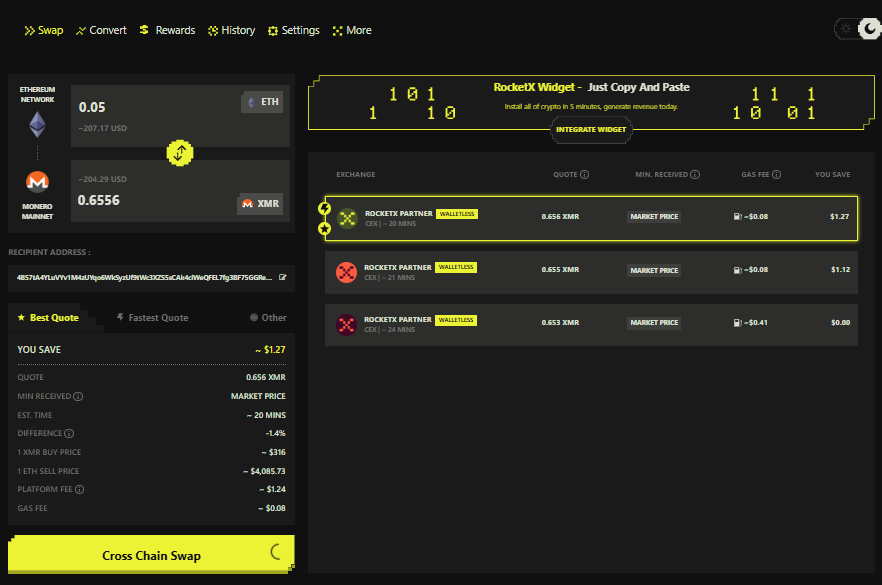
🔹 Step 5: Enter the Amount & Get a Quote
Enter the amount of tokens you want to swap for XMR tokens. RocketX automatically scans hundreds of liquidity pools and exchanges to find the best rate for your swap. Review the quote carefully, including estimated gas and time.
🔹 Step 6: Confirm the Transaction
Click on Cross-chain swap and approve the transaction in your wallet and let RocketX handle the routing. Your XMR will be delivered directly to your Monero wallet address.
Best Wallets to Store XMR Coins
Once you’ve purchased Monero (XMR), the next important step is storing it safely. Since Monero is a privacy-focused cryptocurrency, it’s best to use wallets that fully support its cryptographic features like Ring Signatures, Stealth Addresses, and RingCT. Choosing the right wallet ensures your coins remain secure and your identity stays private.
Here are some of the best wallets to store XMR coins:
Monero GUI/CLI Wallet (Official Wallet): The official desktop wallet by the Monero community offers maximum control, complete node synchronization, and full privacy. It’s ideal for advanced users who want to run their own node and verify transactions directly on the blockchain.
Cake Wallet (Monero.com): A user-friendly mobile and desktop wallet available on Android, iOS, and Mac. It supports in-app swaps, fiat purchases, and multiple cryptocurrencies while keeping your keys secure and private.
Ledger Nano X / S Plus: For long-term holders, Ledger hardware wallets provide offline cold storage, making them one of the safest options. You can pair Ledger with the Monero GUI to manage your funds securely.
Feather Wallet: A lightweight desktop wallet known for its fast setup, Tor integration, and excellent privacy tools. Perfect for users who want quick access without compromising security.
Monerujo: An open-source Android wallet that allows you to connect to remote nodes and manage multiple accounts easily.
Tip: Always back up your seed phrase offline and never store it digitally. For large holdings, use a hardware wallet; for everyday transactions, Cake Wallet is a reliable choice.
Future Potential of the Monero Network and XMR Coin
The future of Monero (XMR) looks promising as global demand for financial privacy continues to rise. In a world where most digital transactions are traceable, Monero remains one of the few cryptocurrencies offering true anonymity—a feature that could become increasingly valuable as governments move toward Central Bank Digital Currencies (CBDCs) and stricter financial surveillance.
Monero’s privacy-first technology ensures it will always serve a unique purpose within the broader crypto ecosystem. Upgrades like Seraphis and Jamtis, expected between 2025 and 2026, aim to improve scalability, transaction efficiency, and even quantum resistance, making the network future-proof against next-generation computational threats.
The network’s tail emission model—a steady 0.6 XMR block reward—ensures miners stay incentivized indefinitely. This design guarantees long-term security and decentralization, unlike blockchains that may struggle with reduced rewards over time.
From a market perspective, Monero continues to hold its position as the leading privacy coin, with consistent adoption among individuals, developers, and even merchants who value private payments. Its integration into atomic swaps with Bitcoin and Ethereum is also expanding its reach into decentralized finance (DeFi), bridging privacy with utility.
While regulatory challenges may limit exchange listings in certain regions, Monero’s decentralized and community-driven structure makes it nearly impossible to censor or shut down. With strong fundamentals, growing real-world use cases, and continued innovation, Monero and XMR are positioned to remain a cornerstone of digital privacy and financial freedom for years to come.

